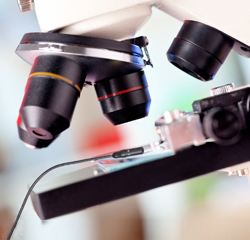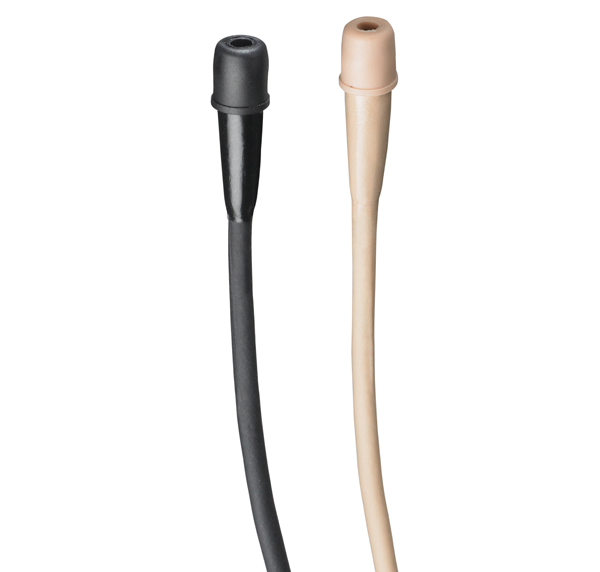What are generally categorized as “miniature” microphones come in three basic configurations: lavalier, headworn and suspended. As someone who does a lot of corporate shows and events, I’ve got quite a bit experience with all three types.
Lavalier mics (“lavs”) can be attached to clothing (usually via a clip) or hidden in costumes, hats and even hair (usually for theatrical performances) to pick up vocals without being visually distracting. They come in wired versions but are far more commonly are plugged into wireless transmitters that allow the person talking or actor/singer freedom of movement.
Broadcasters typically prefer lavs with an omnidirectional pattern, but in live audio we tend to prefer a more directional pattern (cardioid and hypercardioid) to help keep feedback at bay. Lavs used to be more limited in frequency range, optimized for speech and not capable of handling very high sound pressure levels, but many modern models handle wide frequency ranges and high SPL, making them a viable choice for loud singers (think opera) as well as certain instruments.
For speech, it’s great to easily clip a lav to a presenter, but there can be drawbacks, particularly in terms of positioning. Even if the mic is secured in the mid-center of the person talking (i.e., attached to a tie), there can be off-axis issues when turning the head. This effect is compounded even more if the mic is positioned on one side (i.e., on a lapel).
Deploying a model with a wider pattern can help, but it will be more prone to feedback. Positioning the mic farther away from the head to widen the pickup area can also help, but there’s potential to lose too much gain (and again, increased potential for feedback if you boost too much). It’s a tricky balancing act to get it right, and no two people are the same.
Another issue can be clothing noise. Some fabrics can bunch up and rub on the mic as the wearer moves about. Other problems can be caused when a layer of clothing (like a scarf) covers the mic element, generating noise and muffling the voice.
I’ve found that the biggest key is educating and directing wearers. Emphasize that they turn their body (not just their head) in the direction in which they want to face, and after checking for garments that rustle or obscure the mic, let them know about it as well. Also be sure there’s some slack in the cable so if they twist or turn, it won’t yank the mic from its position.
Theatrical users have almost eliminated these issues by placing lavs on performers’ heads – at the hairline pointing down at the mouth, on the sides near the ear pointed toward the mouth, and even hidden in beards. Sometimes lavs can be attached to a pair of glasses or a hat that doesn’t get removed during the scene. All of these options ensure the mic is always in the same relative position to the mouth, meaning that pickup stays consistent.





















